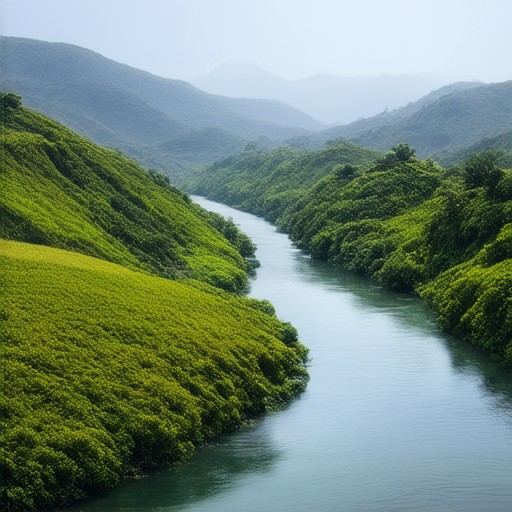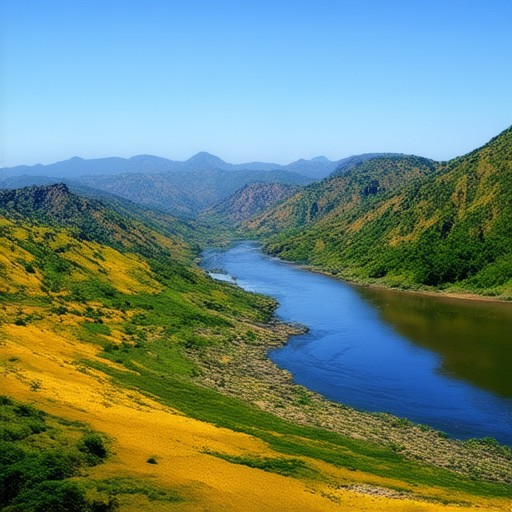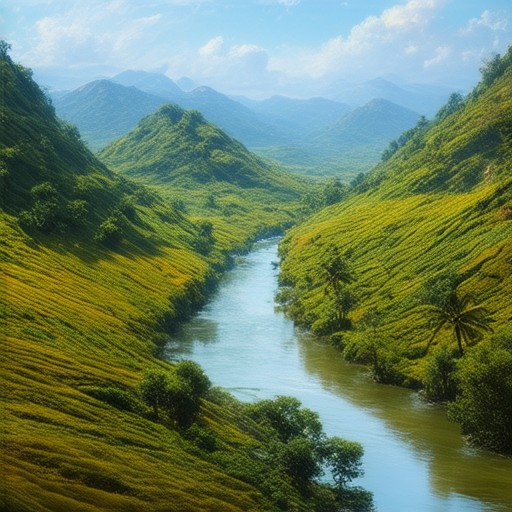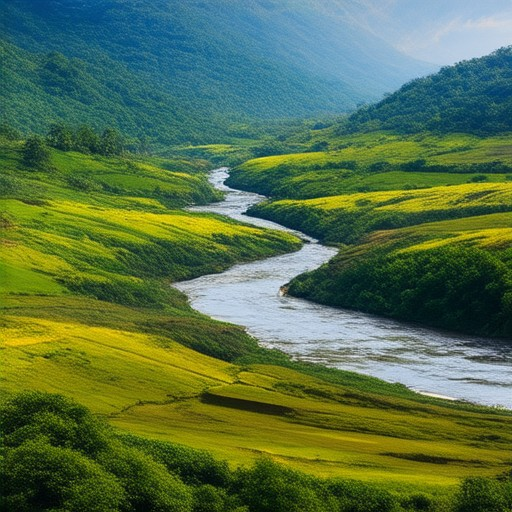Travel isn’t just about visiting new places—it’s about immersering yourself in the stories that shape them. For anyone who loves exploring the world, understanding its rich tapestry of cultures, and uncovering hidden gems, cultural stories for travelers offer a unique perspective. These narratives, whether through folklore, historical accounts, or personal journeys, paint vivid pictures of the places you visit and the people who inhabit them. From short cultural stories for travelers to inspirational tales, these stories are not just entertainment—they’re gateways to deeper understanding and connection. In this article, we’ll explore a diverse range of topics, including cultural folktales, best travel books of all time, and tips on crafting your own travel stories. Whether you’re a seasoned adventurer or someone who craves intellectual exploration, this journey through narrative and tradition promises to enrich your travels and leave you with lasting memories.
Key Takeaways
- Craft Compelling Travel Stories: Learn how to create engaging narratives by defining purpose, setting, and developing relatable characters.
- Engage Readers with Rich Details: Use descriptive language and anecdotes to bring settings and emotions to life.
- Inspire with Memorable Journeys: Discover how iconic stories like “Where the Wild Things Are” illustrate transformative experiences.
- Define Travel Literature: Understand the terms and types, from guidebooks to cultural explorations, that shape travel storytelling.
- Educate and Inspire Cultural Exploration: Delve into diverse cultures and landscapes through authentic, reflective narratives.

What is an example of a travel narrative?
A travel narrative is a written account of travel experiences, observations, and reflections. These narratives can take various forms, including diaries, journals, memoirs, or descriptive essays. They often capture the essence of a destination, cultural experiences, and personal growth during travel.
Here are some notable examples of travel narratives:
- “The Art of Travel” by Alain de Botton – This book explores the transformative power of travel and offers insights into how individuals can find meaning and fulfillment through exploration.
- “A Walk in the Woods” by Bill Bryson – A humorous and insightful account of Bryson’s attempt to hike the Appalachian Trail, blending adventure with introspection.
- “The Journal of Christopher Columbus ” – The original logbooks and journals kept by Christopher Columbus during his voyages to the New World, providing a historical perspective on exploration.
- “The Desert Notes” by Bruce Chatwin – A collection of writings about Chatwin’s journeys through deserts around the world, blending geography, history, and personal reflection.
- “The Geography of Bliss” by Eric Blehm – A narrative exploring the concept of happiness and its relationship to place, through Blehm’s travels across five continents.
These narratives showcase the diversity of travel writing, from historical documentation to contemporary reflections. They offer readers a window into the author’s experiences and the cultures they encountered, making them valuable resources for anyone interested in travel and exploration.
Bending Borders is a platform that celebrates travel stories and cultural explorations, offering unique insights into global destinations and experiences. Explore our curated collection of travel narratives and connect with fellow travelers who share your passion for discovery.
Cultural Folktales
Cultural folktales are a rich and vibrant form of storytelling that have been passed down through generations, serving as a cornerstone of human culture and heritage. These tales are deeply rooted in the customs, beliefs, and histories of various societies, often reflecting the values, morals, and wisdom of the people who tell them.
Origins
Folktales have evolved over thousands of years, with roots in ancient civilizations such as Mesopotamia, Egypt, and China. They are often tied to oral traditions, where stories were shared during gatherings, festivals, or around campfires. These tales were meant to entertain, educate, and preserve knowledge for future generations.
Purposes
Folktales serve multiple purposes within a culture:
- Entertainment: Providing escape and enjoyment through imaginative narratives.
- Educational: Teaching moral lessons, historical events, and practical skills.
- Preservation: Serving as a means to record and transmit cultural legacy.
- Community Building: Strengthening social bonds through shared experiences and traditions.
Types of Folktales
Folktales can be categorized into several types based on their content and purpose:
- Myths: Stories explaining the origins of the world, natural phenomena, and supernatural beings.
- Legends: Tales involving extraordinary individuals, magical creatures, or legendary places.
- Tales: Narratives that recount specific events or characters from a particular time or place.
- Fables: Stories with animals or anthropomorphic figures that convey moral lessons.
- Proverbs: Short sayings that express truth, wisdom, or advice.
Examples Across Cultures
Folktales vary widely across cultures, offering a glimpse into the unique perspectives and worldviews of different societies. For instance:
- Aesop’s Fables from Ancient Greece, featuring clever animals and moralistic endings.
- Native American tales, such as “The Story of the First Rabbit,” exploring creation myths.
- Indian epics like the Mahabharata and Ramayana, which are central to Hindu culture.
- African folktales, often centered around ancestors and spiritual beings.
Cultural Significance
Folktales play a crucial role in shaping cultural identity, reinforcing values, and promoting oral traditions. They are often vehicles for preserving history, language, and traditions that might otherwise be lost. By retelling these stories, cultures continue to thrive and adapt, ensuring their legacy for future generations.
The Importance of Folktales Today
In an increasingly digital world, folktales remain a powerful tool for connecting people to their roots. They offer insight into the human condition, inspire creativity, and foster empathy by presenting diverse perspectives. Whether through written collections or live performances, folktales continue to captivate audiences and enrich our collective understanding of humanity.

Best Travel Books of All Time
Travel literature offers endless inspiration for wanderers, adventurers, and armchair explorers alike. Here are some of the most celebrated travel books that have shaped our understanding of the world:
-
Classics of Adventure and Exploration
- 📖 *The Places in Between* by Redmond O’Hanlon – A vivid account of O’Hanlon’s journey across the African continent, blending adventure, history, and humor.
- 📖 *Between Earth and Sky* by Peter Matthiessen – A poetic exploration of the American Southwest, combining natural history and personal reflection.
- 📖 *The Art of Travel* by Alain de Botton – A philosophical take on travel, questioning its purpose and the meaning of exploration.
-
Cultural Immersion and Storytelling
- 📖 *Bending Borders* by Various Contributors – A collaborative project highlighting global travel stories, cultural insights, and diverse perspectives.
- 📖 *The Geography of Bliss* by Eric Bleem – A journey through the world’s happiest places, examining happiness across cultures.
- 📖 *The Spirit of Place* by Patrick McGrath – A collection of essays exploring the essence of place and its impact on identity.
-
Historical Journeys and Empire Building
- 📖 *Genghis Khan and the Making of the Modern World* by Jack Weatherford – A comprehensive look at the life and legacy of Genghis Khan.
- 📖 *The Conquest of the Americas* by Felipe Fernández-Armesto – A sweeping history of European exploration and colonization in the Americas.
- 📖 *The Discoveries* by Martin Elton – A rich narrative on the Age of Exploration and its global impacts.
-
Natural History and Environmental Writing
- 📖 *A Walk in the Woods* by Bill Bryson – A humorous and insightful account of hiking the Appalachian Trail.
- 📖 *The Last Season* by Eric Bleem – A poignant reflection on the decline of wild lands and their significance to humanity.
- 📖 *The Hidden Life of Trees* by Peter Wohlleben – A groundbreaking exploration of tree biology and forest ecosystems.
-
Memoirs and Personal Journeys
- 📖 *Wild* by Cheryl Strayed – A raw and intimate memoir of a solo journey across the Pacific Crest Trail.
- 📖 *The Lonesome Logger* by Carl Hiaasen – A quirky and humorous memoir about life in the Florida wilderness.
- 📖 *Notes from a Small Island* by Bill Bryson – A charming collection of observations from a year spent traveling the British Isles.
-
Guidebooks and Practical Travel Tips
- 📖 *The Rough Guide to…* Series – Known for its detailed and unbiased coverage of destinations worldwide.
- 📖 *Lonely Planet* Guides – A trusted resource for budget-conscious travelers seeking offbeat adventures.
- 📖 *The Intelligent Traveler’s Guide to Europe* by Rick Steves – Offering practical advice and cultural insights for travelers.

How to Write a Story About Traveling
To craft an engaging travel story, consider the following steps:
- Purpose: Define the reason behind the journey—whether it’s for adventure, self-discovery, or simply leisure.
- Setting: Choose a specific location or time period to ground your story in reality and immerse the reader.
- Characters: Develop a protagonist who can be relatable and whose experiences mirror those of the reader.
- Showing vs. Telling: Use descriptive language to convey emotions and scenes rather than merely stating facts.
- Pacing: Balance between fast-paced action and detailed descriptions to maintain engagement.
- Conflict: Introduce challenges or unexpected events to add tension and depth to the narrative.
- Emotion: Highlight the emotional journey, whether it’s excitement, fear, or awe.
- Structure: Outline the story from the initial desire to travel, through planning and preparation, to the journey itself, and finally reflections upon returning home.
- Anecdotes: Include specific, memorable moments that highlight the uniqueness of the experience.
- Research: Immerse yourself in the destination’s culture, history, and local lore to add authenticity.
- Narrative Voice: Choose a perspective (first-person, third-person limited, etc.) that suits your storytelling style.
- Revision: Edit and refine your work to ensure clarity, coherence, and emotional impact.
Example of a Journey Story
A journey story is a narrative that explores movement, discovery, or transformation. Here are three examples:
- Personal Journey: In “Where the Wild Things Are” by Maurice Sendak, young Max ventures into a mysterious forest, embarking on a journey that challenges his perception of reality and fear.
- Object’s Journey: The story “The Queen’s Hat” by Dick Brinnin follows a red hat as it travels the globe, encountering various cultures and adventures, symbolizing the journey of curiosity and exploration.
- Quest for Something: In “Peace at Last” by Russell Hoban, Mr. Bear searches for sleep, illustrating the journey of perseverance and the pursuit of simple joys.
These tales highlight the essence of journey—whether physical, emotional, or symbolic—capturing the spirit of adventure and growth.

What is a Travel Story Called?
A travel story is commonly referred to as travel literature or travelogue . This genre encompasses various forms of narrative writing that recount personal experiences, observations, and reflections during travel. Travel literature can take many shapes, including guidebooks, memoirs, nature writing, and cultural explorations.
Here are the primary types of travel stories:
- Guidebooks : These are informational texts that provide details about specific destinations, offering advice on everything from accommodation to local customs. Examples include works by authors like .
- Memoirs : Personal narratives that share the author’s journey and experiences, often focusing on unique or transformative travels. Notable examples include works by .
- Nature Writing : Stories that emphasize the natural environment and outdoor activities, often blending descriptive writing with personal reflection. Iconic works by exemplify this style.
- Cultural Exploration : Texts that delve into the social, historical, and artistic aspects of different regions, providing insight into their cultures. This category includes works by .
- Adventure Tales : Narratives centered around thrilling journeys, physical challenges, or exploratory missions, such as “Around the World in 80 Days” by .
Travel literature serves to educate readers about destinations while fostering a deeper connection to the world’s diverse cultures and landscapes. By sharing personal stories, authors inspire readers to embark on their own adventures and broaden their horizons.




0 Comments